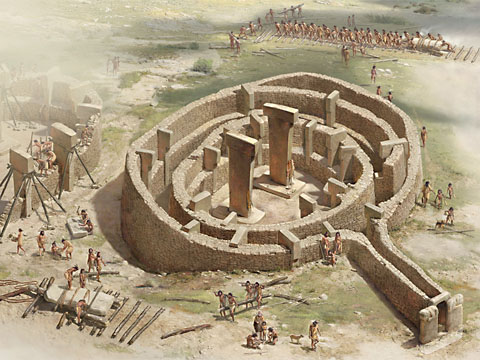 |
| Göbekli Tepi |
It has also been observed that, in contrast to earlier cave art from Stone Age peoples, which seem to depict the power of nature as supreme, the ruins at Göbekli Tepi evidence a shift in human consciousness. It is now man who is at the center of the world. No longer merely a small part of the natural world, as his ancestors had been, man had begun to see himself and his awareness as extending throughout nature, influencing and guiding it in service to himself and the otherwordly powers he believed in. Man had begun to regard himself as a chosen species, elevated above all others, both materially and spiritually.
I will reference once again the myth of Adam and Eve, in which God tells Eve that henceforth she will be placed under Adam and he will be her master. If Eve represents nature herself, we can view this story as a Bronze Age echo of that first Near Eastern awakening millennia earlier among the people of Göbekli Tepi.
In the Rosicrucian tradition, the Book of Nature is seen as another Gospel, one written by God's own hand, whose esoteric mysteries are to be sought out and examined by those who wish to raise their spirits toward a closer union with the divine. Nature contains "secret sayings" as the author of the Gospel of Thomas might have put it, and salvation depends upon understanding what those sayings are telling us. Faith alone is not enough. Sacramental religion alone is insufficient. Study, meditation and deciphering one's own internal mythology as it mirrors the exterior world is necessary to achieve the fullest possible reintegration.
This is the path that Rosicrucians and the people of Göbekli Tepi before them have laid before us. It is up to each of us to take up the cross and follow them.
Nice! This place is so fascinating! I use Blogger, too. Check me out! https://boredombustertriage.blogspot.com
ReplyDeleteThanks! And thanks for alerting me to your blog. As it happens, the cheetah is my spirit animal too. Once when I was young, and my parents and I were on safari, we encountered a mama cheetah and her cubs standing on a downed tree, much like the picture on your post. :)
Delete